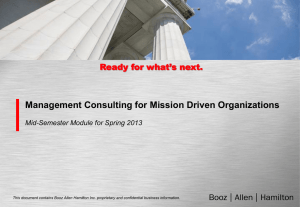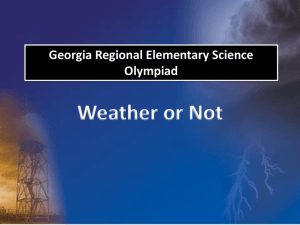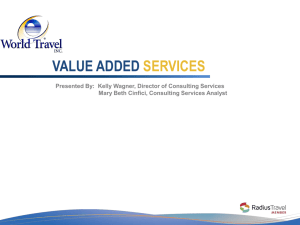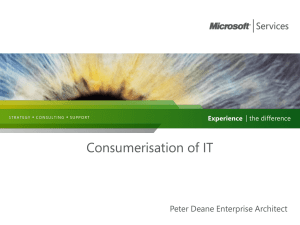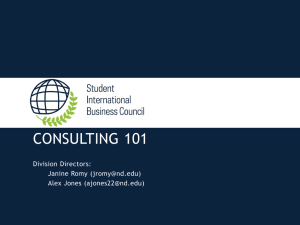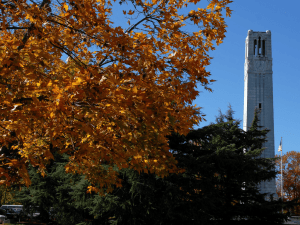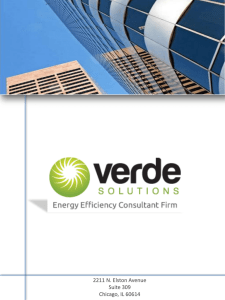Community Conversation Economic Impact PowerPoint
advertisement
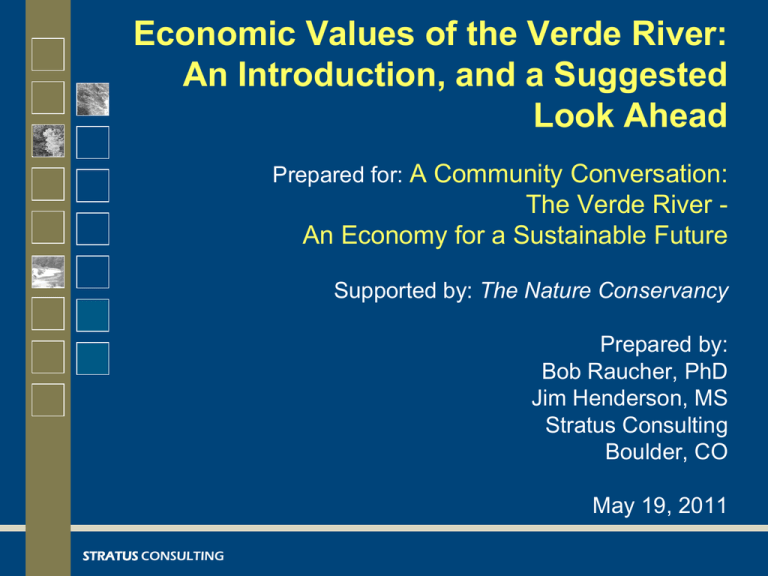
Economic Values of the Verde River: An Introduction, and a Suggested Look Ahead Prepared for: A Community Conversation: The Verde River An Economy for a Sustainable Future Supported by: The Nature Conservancy Prepared by: Bob Raucher, PhD Jim Henderson, MS Stratus Consulting Boulder, CO May 19, 2011 STRATUS CONSULTING Presentation Outline A brief overview of the economic value to the region of the Verde River and associated groundwater resources Based on work funded by The Nature Conservancy STRATUS CONSULTING Economic Values to the Region Many ways to consider economic values from a regional perspective “Gross Regional Product” approach – Traditional accounting of the market value of goods and services produced annually – For Verde Valley, perhaps $1 billion annually Other traditional, market-based metrics – Value of all the property assets – Housing stock: perhaps $6 billion, Valley-wide STRATUS CONSULTING Additional Economic Values to the Region Many other important “values” originate outside of the market -- “Nonmarket” goods and services – Recreational activity and scenic vista enjoyment – Agrarian character of portions of the Valley – Habitat for wildlife (including special status species) Challenging (and very unusual) to assess the total value provided to a region by a natural asset (such as the Verde River) – Which types of values can be quantified? – How to estimate change in value-added from potential changes in natural asset (e.g., changes in streamflow or aquifer levels)? STRATUS CONSULTING Focus on Economic Value to the Region Values measured are the “direct” values – Output-oriented perspective (i.e., economic activity) – There are also “multiplier effects” for some uses, where business revenues and payments to employees are re-spent in the local economy – Does not include all the inherent value of the Verde River and groundwater STRATUS CONSULTING Categories of Water Use We Could Value Recreation and Tourism – State Parks, National Monuments, Fishing, Verde Canyon RR; Agriculture – Production agriculture and wine industry Municipal / Residential – Municipal water utility use, exempt wells, privatelyowned public water systems Commercial / Industrial – Sand and gravel / cement, and golf Ecological – Threatened and endangered species STRATUS CONSULTING Recreation and Tourism as an Example Growth sector, with high annual economic value at baseline (current) conditions – More than $87 M direct revenues, plus $14 M in multiplier impact, creating 737 local jobs Not all values included (e.g., bird watching and boating, due to lack of data on visitation) STRATUS CONSULTING Recreation and Tourism – Direct Revenue, Regional Impact and Employment Category Annual Direct Expenditures/Sales State Parks $35.3 M National Monuments $33.7 M Fishing Verde Canyon RR Multiplier Effect Employment $14.0 M 575 $8.0 M $2.6 M 112 Approx. $10 M + * Approx. 50 $87.0 M $16.6 M 737 Total M = million, * Not estimated State Parks = Dead Horse Ranch State Park, Red Rock State Park, and Slide Rock State Park National Monuments = Tuzigoot National Monument, Montezuma’s Castle State Park STRATUS CONSULTING Agriculture Mostly production agriculture including livestock and livestock products – For Middle Verde: $29 million per year in sales ($33 million in expenses) Local sales of organic and other locally grown produce is increasing – Small relative monetary value – Important noneconomic benefits • Preserves open space and agricultural heritage • Promotes local sustainable values STRATUS CONSULTING Wine Industry Rapid growth sector (doubling every year for last 3 years) Wine industry direct revenue – $5.5 M /year Additional wine industry regional economic impact – $3 M per year Potential change in annual values depends on increasing local grape production STRATUS CONSULTING Summary of Estimated Annual Economic Values Sector Current Annual Value, $M Recreation and Tourism 87 * Production Agriculture Wine Industry 29 5.5 * Municipal/Residential 13 – 17.5 Commercial/Industrial ** Ecological Total 19 – 29 154 – 168 + M = million * In addition to direct values, there are multiplier effects for these sectors ** Commercial/industrial values are generally believed to be large but cannot be estimated STRATUS CONSULTING Conclusions from Economic Values Regional water resources (Verde River and aquifer system) provide significant “economic value” to the region – At least $150M/yr in direct value – Probably considerably higher • Not all types of values could be considered • Multiplier effects not included in total STRATUS CONSULTING Some Key Observations Having an idea of the economic value of the River provides many important insights on economic value, and what value might be gained (or lost) due to water resource impacts “Not everything that can be counted counts, and not everything that counts can be counted.” (Albert Einstein, attributed) STRATUS CONSULTING The Triple Bottom Line (TBL) Approach: Aligning Economics with Sustainability Three bottom lines, to reflect: – Financial results (cash flow, output, revenues, costs) – Social outcomes (e.g., community values, fairness) – Environmental (e.g., ecosystems, water quality, carbon footprint) STRATUS CONSULTING A Typical Triple Bottom Line Depiction (implying a mythical “Bliss Point” shown in white) Environment Economy STRATUS CONSULTING Society TBL Graphic: Choosing the Least Cost Option May Not Deliver Social and Environmental Values to the Community Social 1 Environmental STRATUS CONSULTING Financial Options that Meet Broader Goals May Increase Financial Costs, but Yield Larger Net Benefits to the Community Social 2 1 Environmental STRATUS CONSULTING Financial TBL of Philadelphia’s Green Stormwater Control SOCIAL (> $2.3B) • • • • • • • • • Air quality ($222 M) Water quality ($147 M) Carbon footprint ($27 M) Ecosystems (+) ENVIRONMENTAL (> $400M) STRATUS CONSULTING Recreation ($525M) Property values/aesthetics ($575 M) Green Jobs ($125 M) Public health: Heat stress ($1.1 B) Energy cost savings ($36M) • Cost of Green = cost of Grey CSO control = FINANCIAL Parting Thoughts The economic information provides useful insights – Recreation and tourism contribute significant economic value to the region – In the agricultural sector, the growth of the wine industry is significant – Ecologic values are significant, but challenging to quantify Looking forward, a Triple Bottom Line perspective may be a useful way to evaluate alternative future paths – Look beyond the financial outcomes, and include important social and environmental values STRATUS CONSULTING Thank You! Bob Raucher braucher@stratusconsulting.com 303-381-8000 (ext 216) Jim Henderson jhenderson@stratusconsulting.com 303-381-8000 (ext 266) STRATUS CONSULTING
